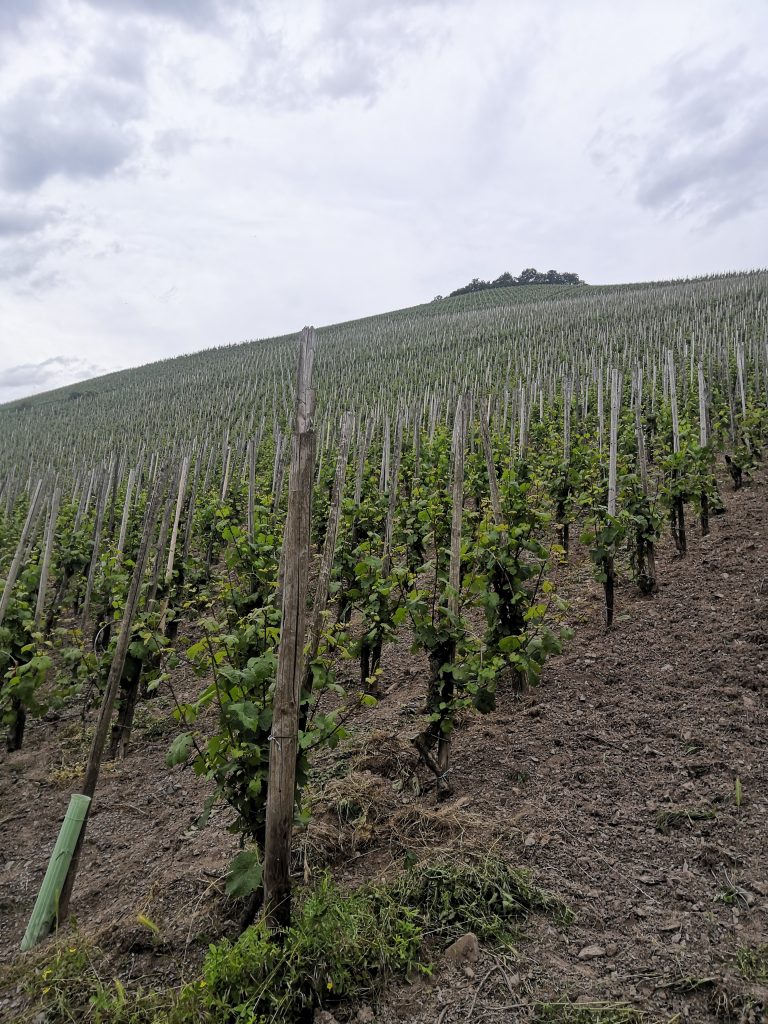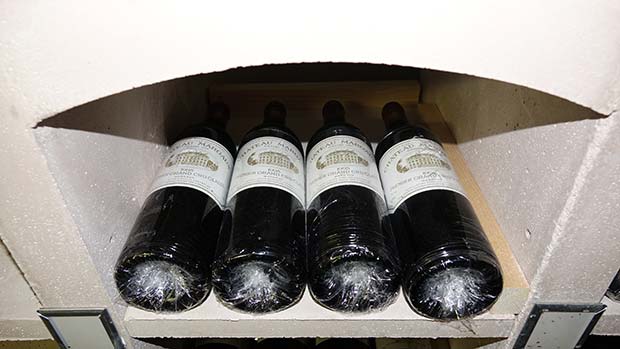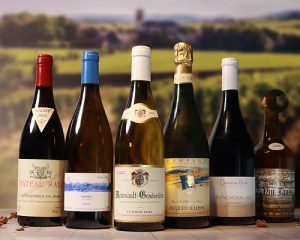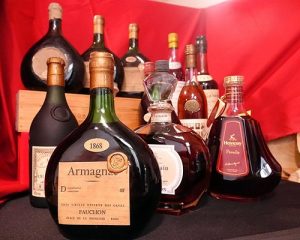
At the turn of the 20th century, German wines were in their heyday, their wines selling for prices similar to first growth Bordeaux. In the second half of the 20th century, however, the German wine world went through a brief period of darkness. Expansion of certain wine regions into land less suited to winegrowing coupled with recourse to new technology rather than age-old practices resulted in lots of cheap syrupy wines, in a time when the world wanted quantity rather than quality.
Things have since turned around for German winemaking, and the renaissance of its fine wines – particularly Riesling – is an open secret. At iDealwine, we have witnessed this sea change at close hand, as they become increasingly coveted at auction, with some releases reaching prices to rival with the finest that Bordeaux and Burgundy can offer.
Of all of the non-French wines to be auctioned on iDealwine in 2019, it was a German wine that achieved the highest price: a bottle of 2010 Scharzhofberger TBA GK AP0811 from the legendary Egon Müller, which sold for an impressive €7,296. Egon Müller is one of those names who makes any wine enthusiast go misty-eyed – his Rieslings never fail to cause a storm with bidders. Perched on steep slopes of shist overlooking the Saar – a tributary of the Mosel – this revered domain’s TBA is one of the world’s most expensive wines.
While Egon Müller is without a doubt the poster child of German winemaking, there are many more stars in this particular constellation…
German wines at auction | 2019 highest-priced lots

Riesling trimphant
German Riesling has achieved a very high level of esteem worldwide. They are certainly sought after in iDealwine’s auctions: all but one of the ten highest-priced lots of German wine are made from the Riesling grape. These racy, nervy wines with masses of crisp acidity and layers of flavour (minerals, lime, honey) are reputed throughout the world.
The Mosel is home to some of the finest Riesling in Germany. Although technically too far north to make wine, the Romans nevertheless planted vines on the steeply angled slopes overlooking the Mosel river, where the snow melted first – evidently confusing vertigo with viticulture! The unique terroir makes Mosel Riesling some of the most difficult wines in the world to produce, undoubtedly contributing to their collectability.
Perhaps most importantly, these wines can improve in the bottle for decades. The majority of our ranking is composed of vintage with at least ten years of bottle age, and the second most expensive German wine to be auctioned last year was a 1971 Riesling Wehlener Sonnenuhr LGK AP2172, which was bought for €3,070 by a British wine enthusiast.
The audience for German wines is indeed increasingly international: the UK and Hong Kong are the most avid buyers, with interest coming from all over Europe.
Sweet reigns supreme
The highly complicated labels on German wines – which essentially state how ripe the grapes were at the moment of harvesting – can take time to decipher. Looking at 2019’s highest-priced lots of German wine, contrary to French wines, sweet wines perform best. The sweetest of them all, ‘Eiswein’ are produced with grapes picked during the first frosts of winter, resulting in highly concentrated, almost viscous, deeply flavorful wines. There are several ice wines in the rankings from Egon Muller, Helmut Donhoff and Joh. Jos. Prüm.
Top names
The historical Geltz Ziliken winery sits in third and fourth position with two magnums: a 2003 Riesling Saarburger Rausch LGK Versteigerung AP0104 Formeister and 2005 Riesling Saarburger Rausch LGK Versteigerung AP0106 Formeister both went under the hammer for just over €3,000. Another legendary Mosel winery, that of Joh. Jos. Prüm, appears three times in our top 10, attesting to the unparalleled reputation of Mosel Riesling.
Only two wines in the ranking don’t come from the Mosel. Although prominent since the 18th century, Weingut Keller in the Rheinhessen region has seen a meteoric rise to fame thanks to the work of current owner Klaus-Peter Keller, exemplifying a rising generation of talented producers. His old-vine cuvée G-Max is probably the world’s most expensive dry Riesling: the 2005 and 2009 vintages reached €2,432 and €1,719 respectively at auction. A magnum of Eiswein from domain Dönnhoff represents the only Nahe wine in the ranking. The best wines from this region are said to have the elegance of the Rheingau, the body of a Rheinhessen and the acidity of a Mosel: Dönnhoff is the Nahe’s most celebrated producer.
Names that don’t appear in iDealwine’s rankings, but which show great potential on the auction market include Karthäuserhof, Willi Schaefer and Markus Molitor, particularly if found in old vintages and rare cuvées. While our rankings clearly reflect the supremacy of Riesling, the nation’s other grape varieties should not be neglected. Germany’s greatest offerings in terms of Spätburgunder, Sylvaner and Wiessburgunder are thoroughly worth seeking out, albeit for the pleasure of tasting rather than investment purposes – for now, at least.
While for years the majority of wines sold on iDealwine have been French, this is simply because our wines have always been sourced from French cellars – we look forward to our catalogues becoming more diverse in the future.
One thing’s for sure, it’s a winning time for German wine, and the collectors are coming. We expect to continue to see these wines, as well as other rising stars, perform extremely well at auction: watch this space…
If you are considering selling your wine collection, why not ask for a free estimate?
Find out more about selling your wines with iDealwine here.



